Thanks to a kind invitation from Matt, a Lambeth River Station firefighter, husband Nigel and I were privileged to see the central London Thames from one of London Fire Brigade’s newest fire rescue boats: ERRINGTON.
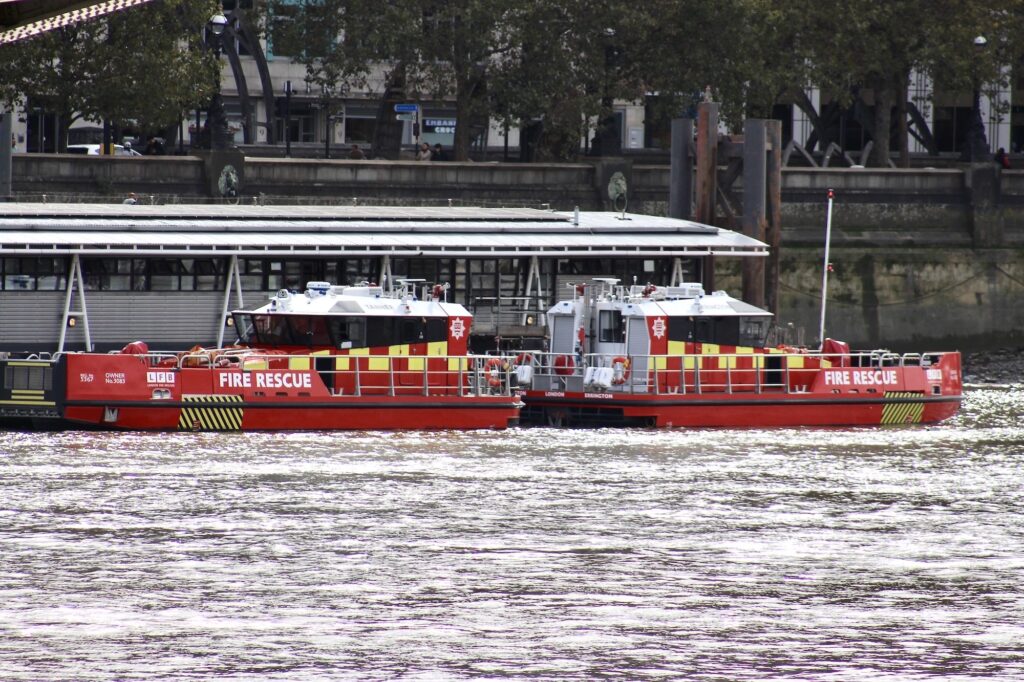
Arriving one Sunday morning at the Lambeth River Fire Station, we were given a tour by Matt and friends round London’s only River Fire Station. It’s on two levels: the firefighters have single rooms to sleep in when they’re off duty; an office; a kitchen, where we could see the preparation of a delicious looking joint of pork; a comfortable sitting room with television; a gym and lecture room. From there, they provide twenty-four hour cover for every day of the year. Compared to the image and description below, their facilites have come a long way since the station first opened in 1937.
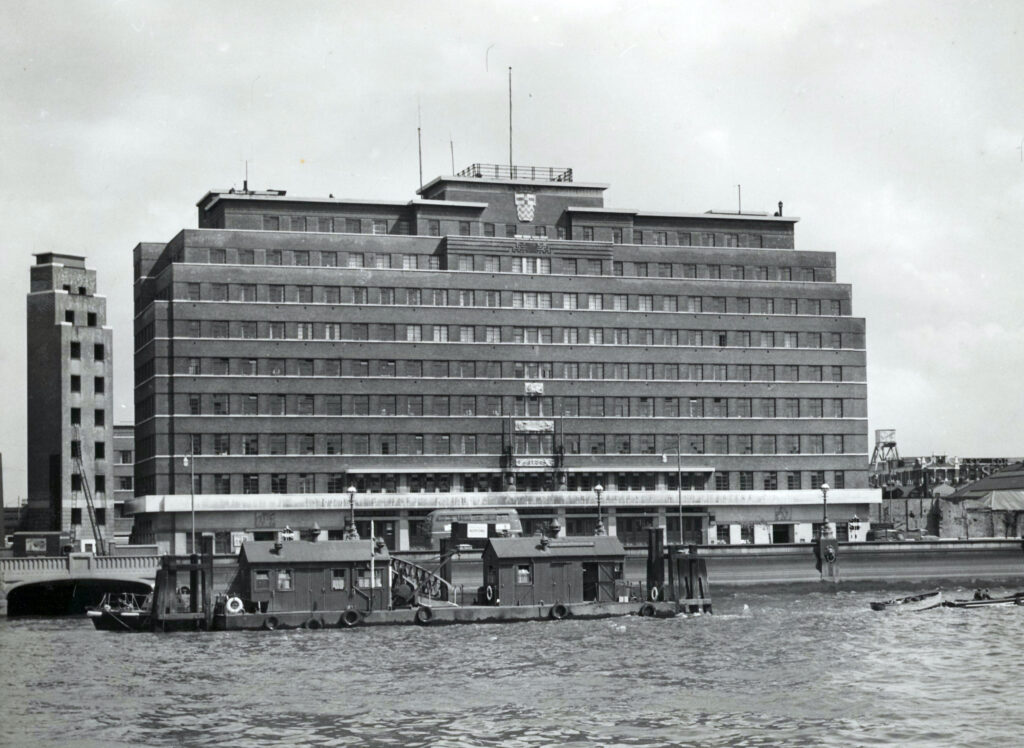
The Lambeth River Fire Station opened in 1937 as part of the London Fire Brigade’s new headquarters, established in the building directly behind on the Albert Embankment. Two simple huts were set on a pontoon where crews would spend their day shifts on stand-by, returning to the land station on the embankment for meals and to sleep in a large dormitory on the first floor.
Happy to have been invited to see round the Station, we were even happier when we were asked if we would like “to go out” on the river. No hesitation there. The crew assembled and we were strapped into life belts and led onto fire boat ERRINGTON. It was a quiet day on the river with some welcome sunshine after several grey December days.
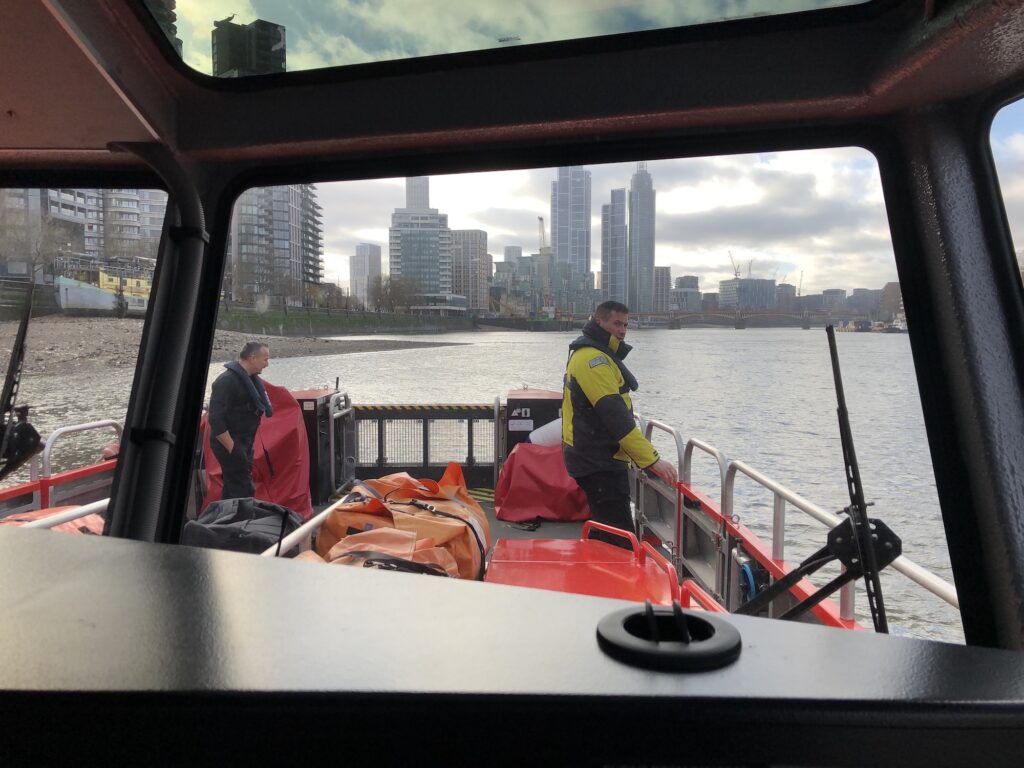
Seated in ERRINGTON’s wheelhouse, either side of the coxswain, we watched as Matt and Simon cast off and the boat began to turn downstream towards Lambeth Bridge..
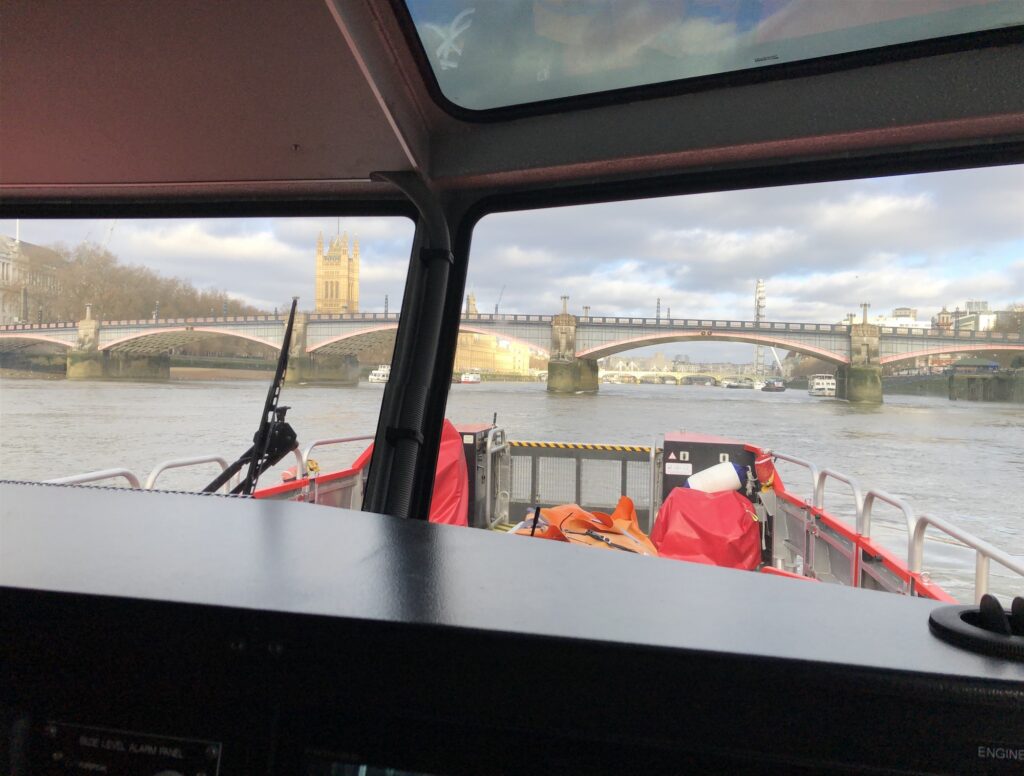
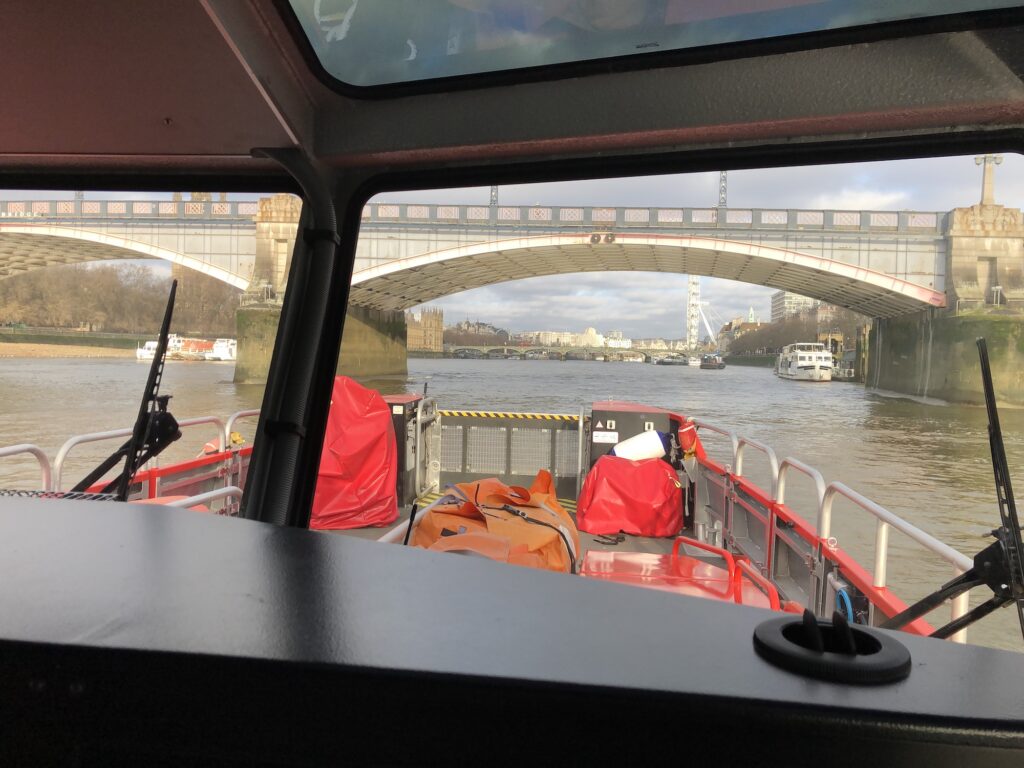
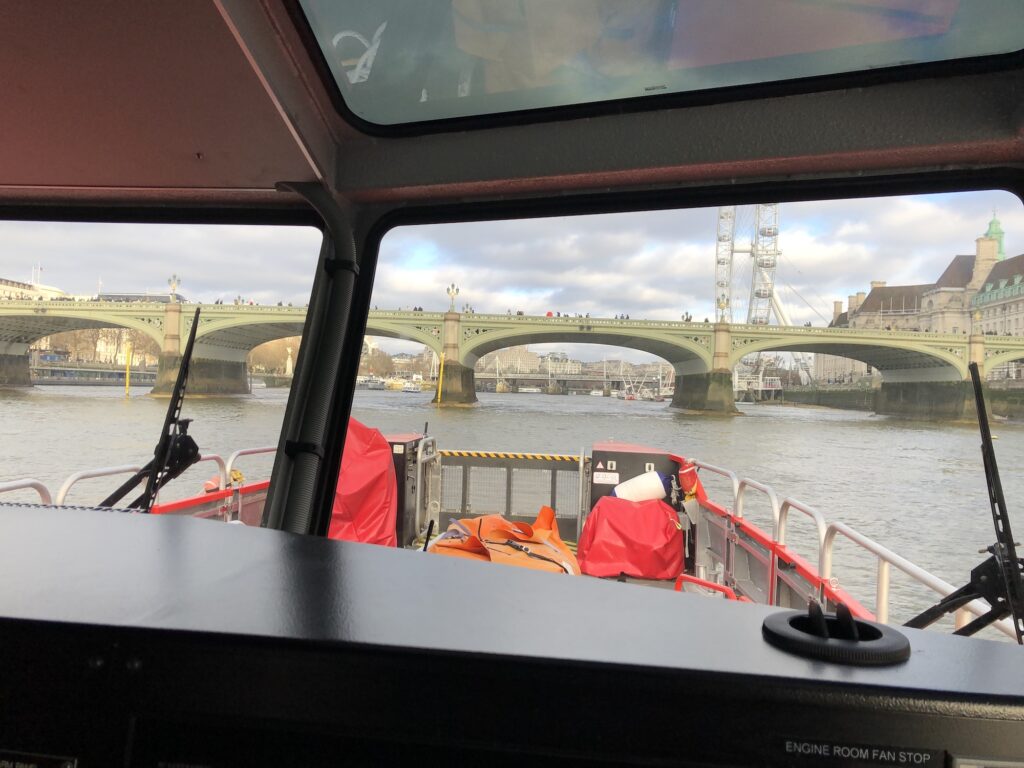
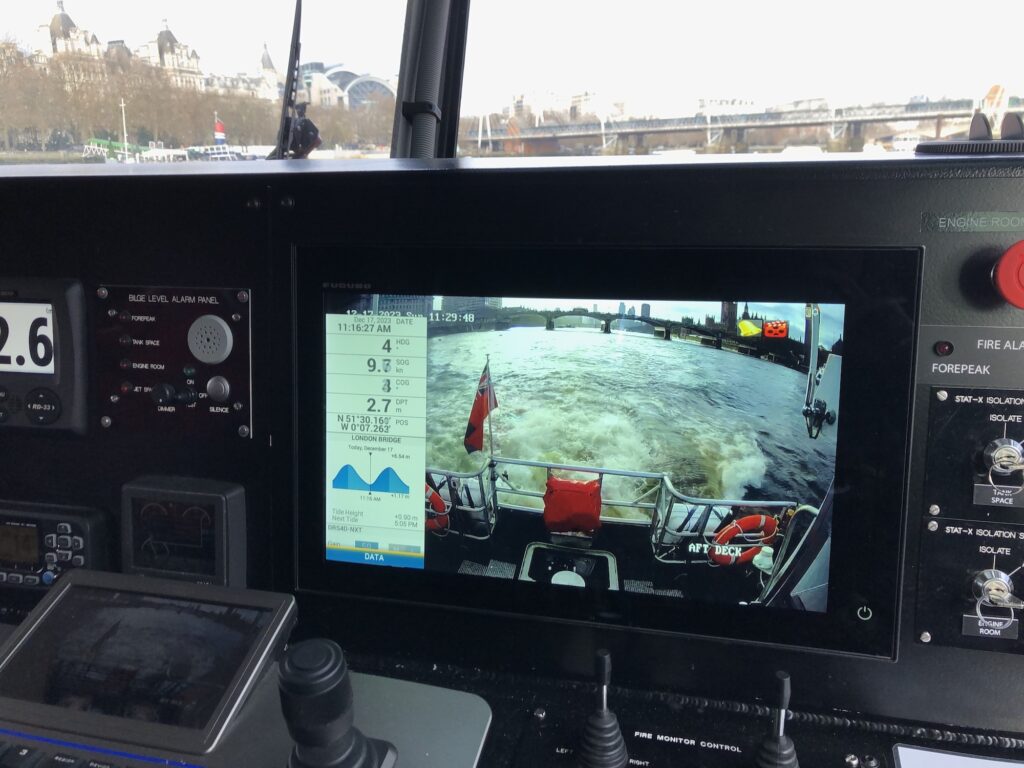
The latest instrumentation gives the coxswain an all round view and details on the data screen among others, show tide height, depth of the river, position and speed.
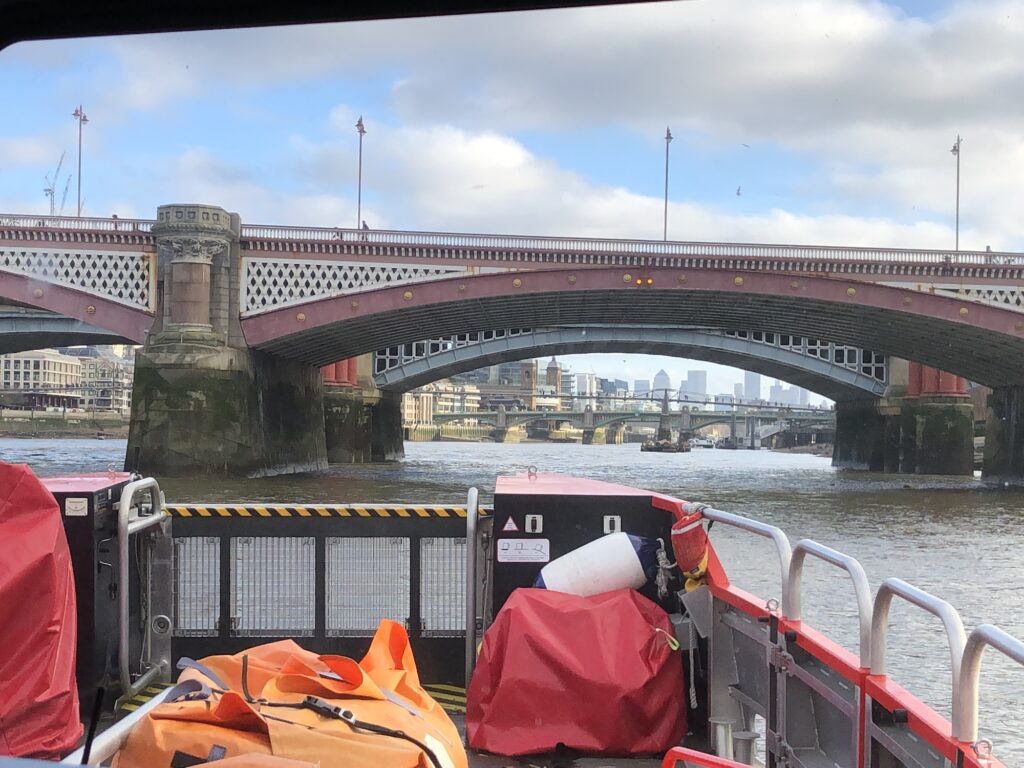
All of London’s history is woven into the ebb and flow of the River Thames. Civilisations have come and gone, leaving traces of their passing for historians to uncover. There is even evidence of prehistoric human occupation dating back 6000 years to the Mesolithic Period.
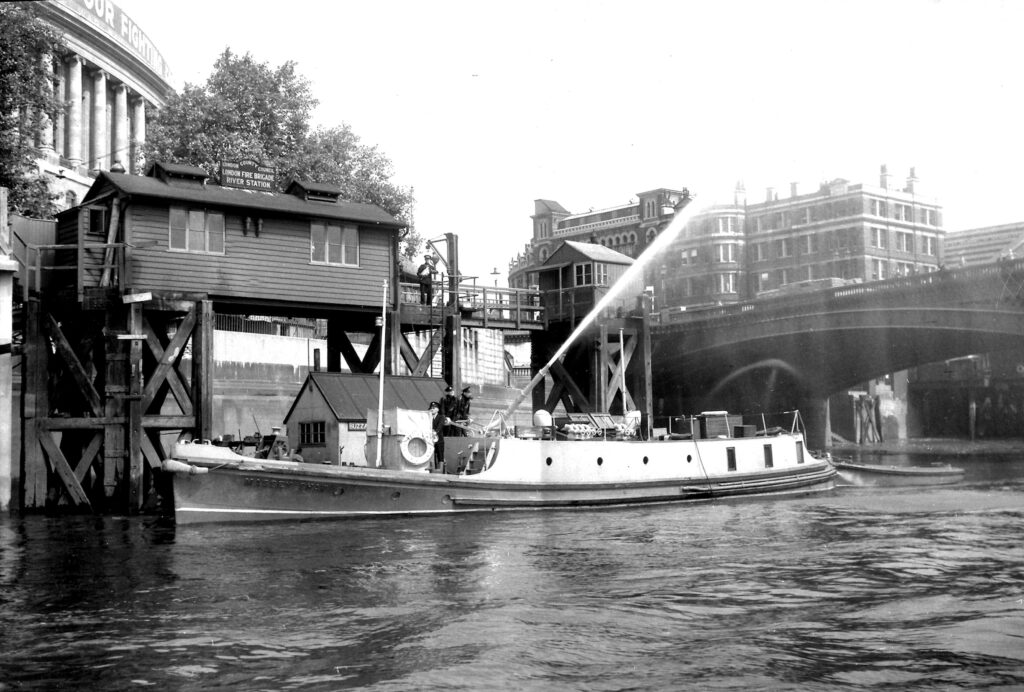
As we approached Blackfriars Bridge I was reminded of Gustav Milne’s book The Thames at War, where he writes: “There were ten river stations in operation during the height of the Blitz. […] Each would comprise offices and the firefighters’ dormitory and canteen, in an accommodation barge moored on the river or in a requisitioned building on dry land.” One was by Blackfriars Bridge, where the Massey Shaw was based, and among the others was the Lambeth River Fire Station on the Albert Embankment, now the London Fire Brigade’s only river station, home of its most up-to-date fire rescue boats ERRINGTON and TANNER.
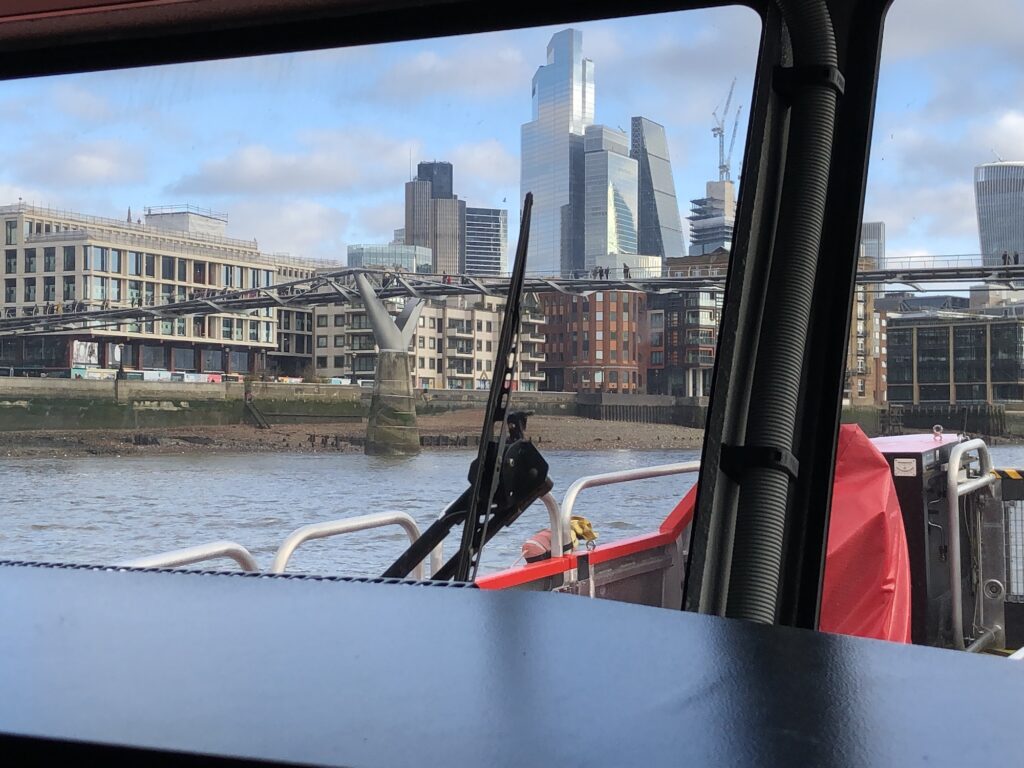
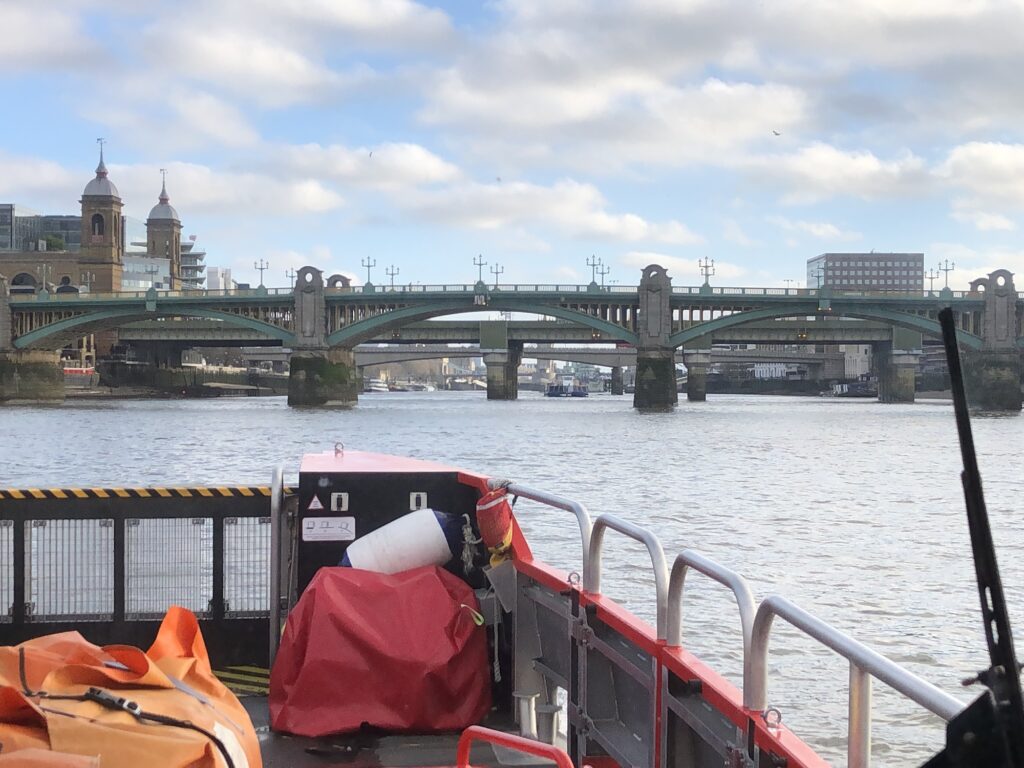
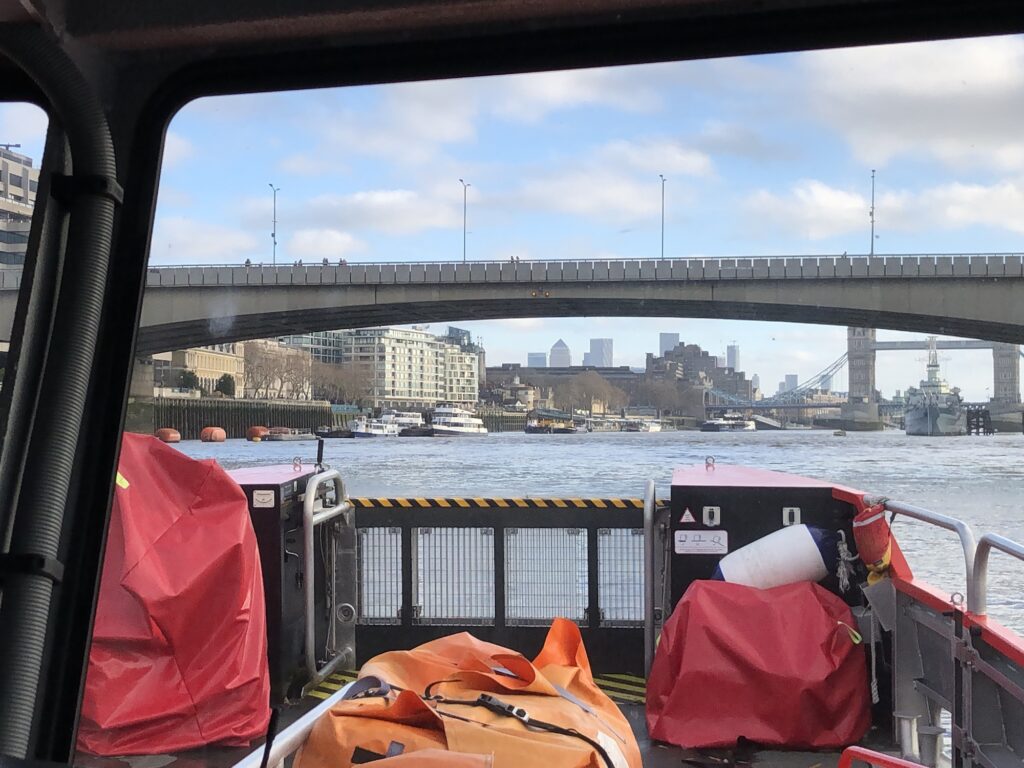
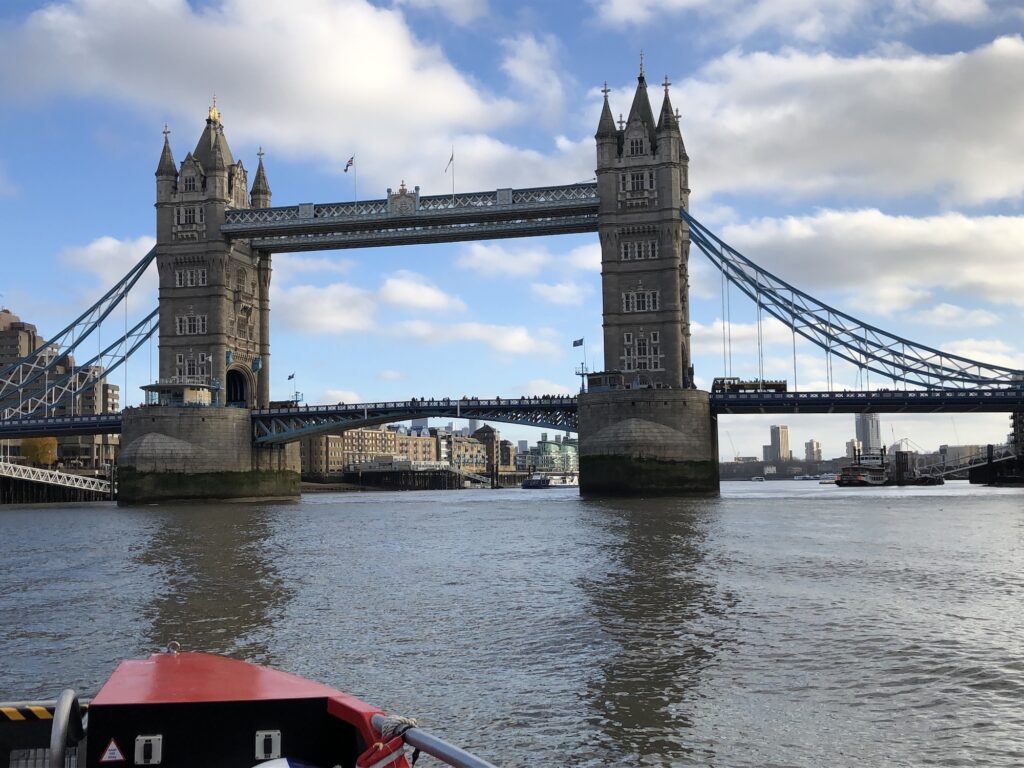
Having remained in our seats in the wheelhouse, the coxswain slowed speed, brought ERRINGTON to a stop and kindly offered us a chance to take some pictures.
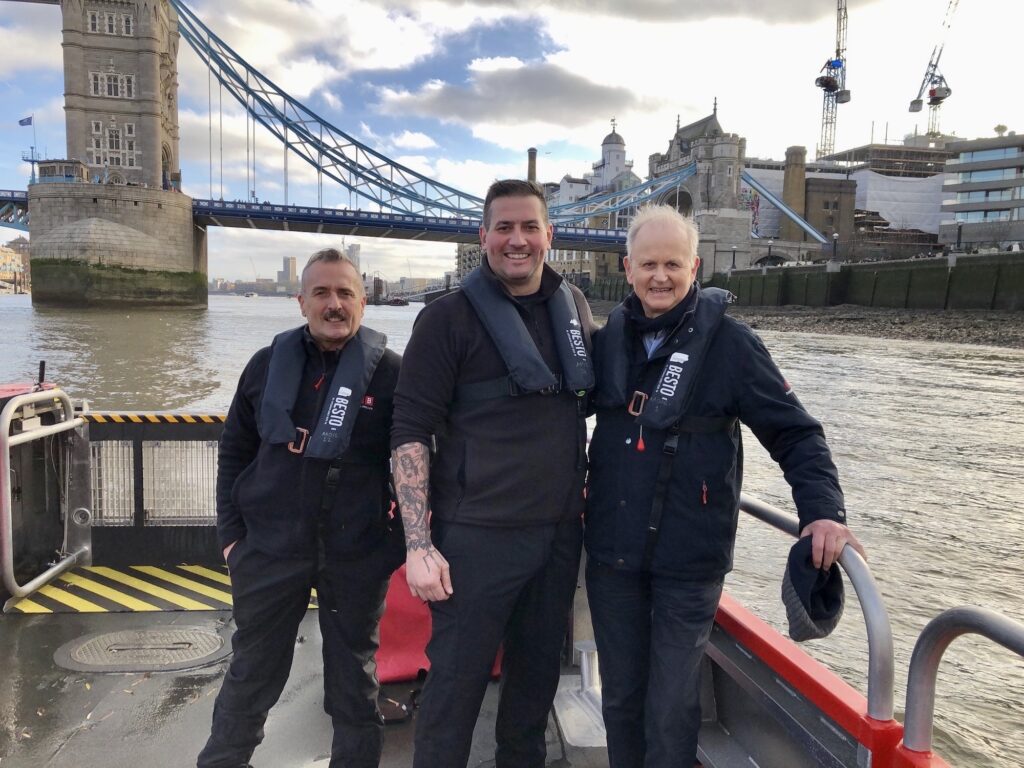
From there, unleashed from the bridges stitching it together in the centre of London, the Thames widens out, and sitting back in the wheelhouse, we could feel the surge of power as the coxswain increased speed, only slowing down as we passed international code flags ‘Romeo Yankee’, marking work in progress on one section of the riverside. ERRINGTON has a top speed of 45 knots (51 mph). As we went past the Metropolitan Police Marine Policing Unit base at Wapping, we were told – was that a bit ruefully – that the Marine Police RIBs are the only boats faster than the fire boats. After an exciting taste of speed downstream, we turned for home.
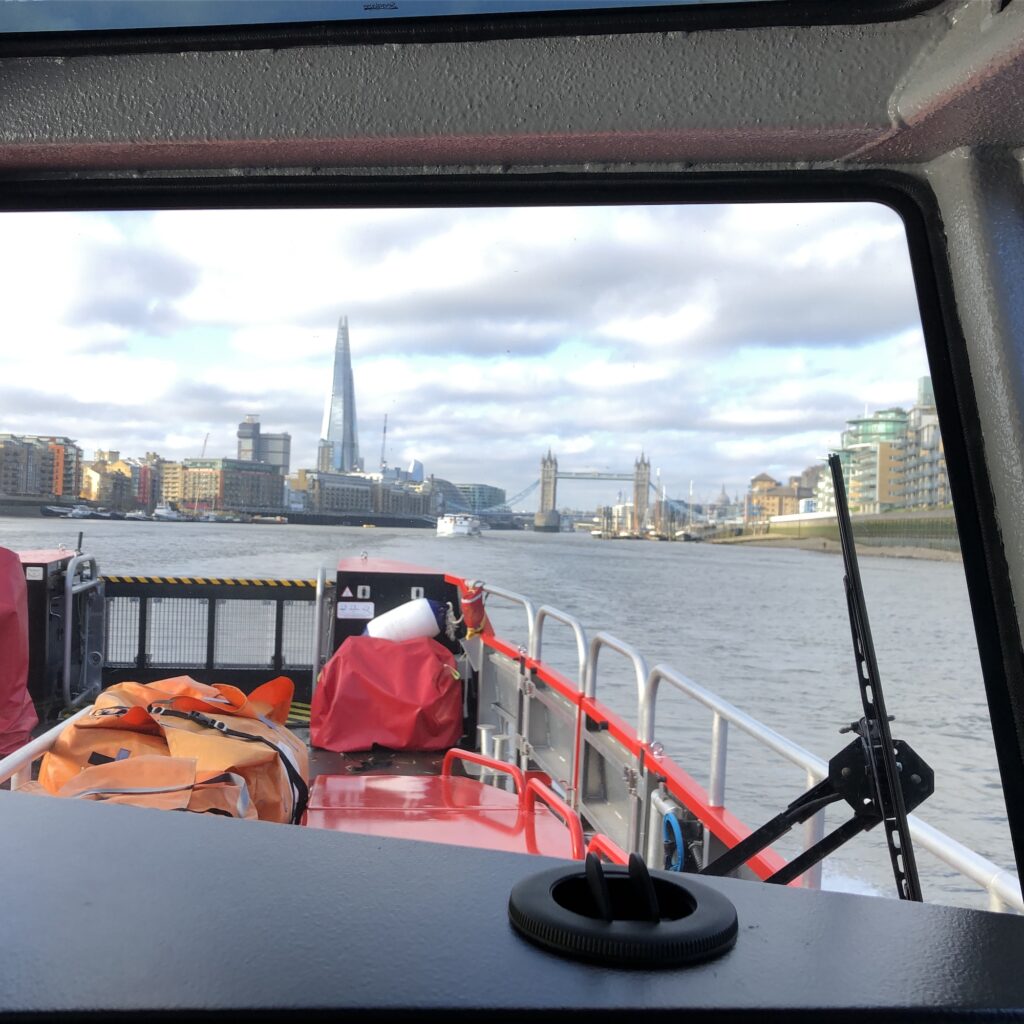
I asked what would have happened if there had been a call for assistance while we were on board and was told that “a judgement on the seriousness of the call would have to be made and we would either be dropped off somewhere on the way, or if it wasn’t anything too serious, we would have stayed on board and come along for the ride to watch the crew in action.”
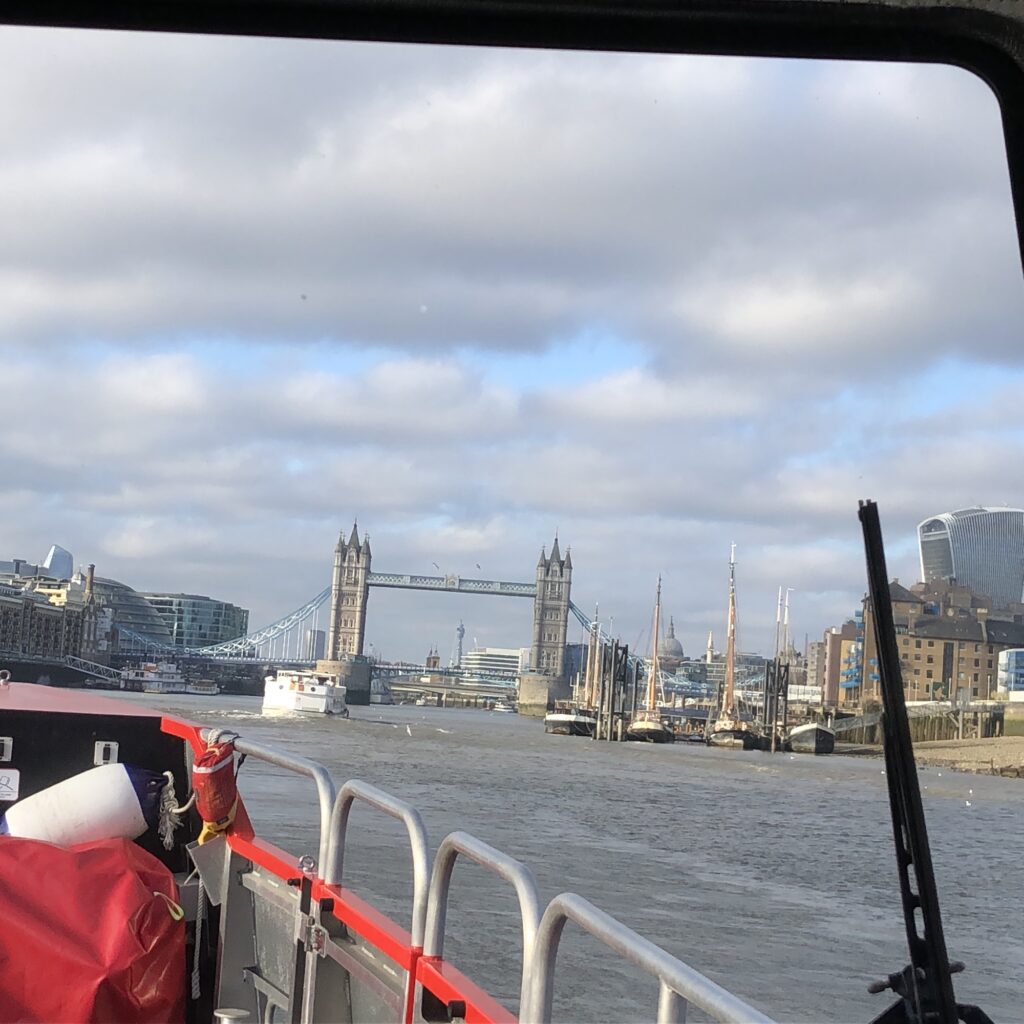
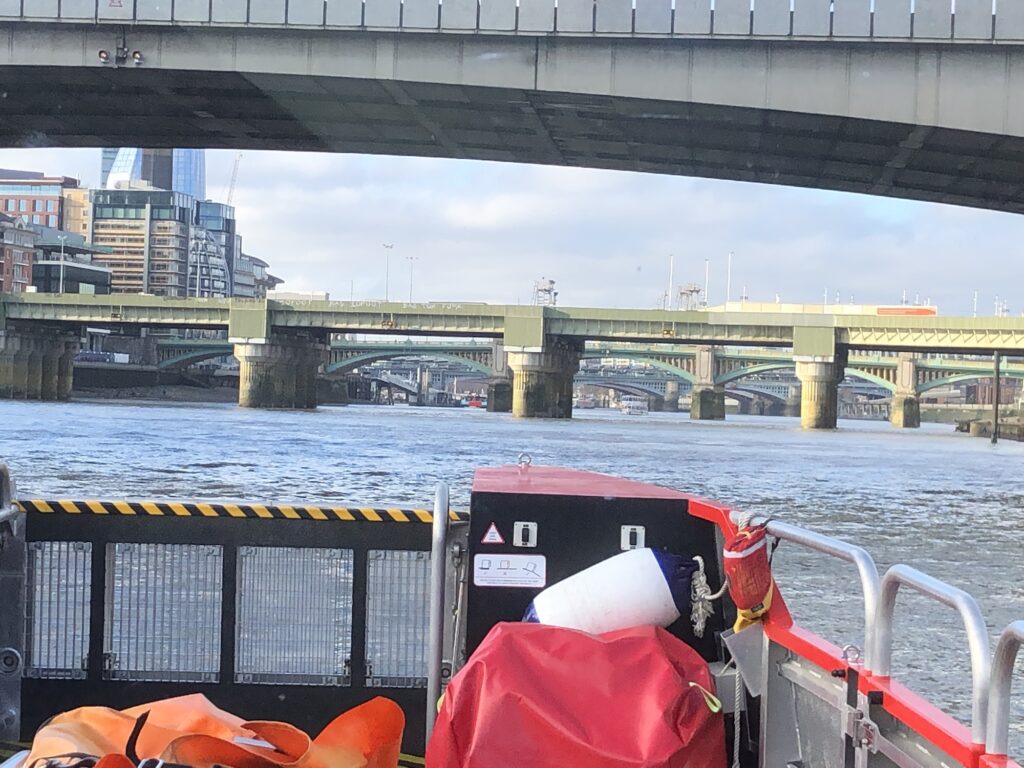
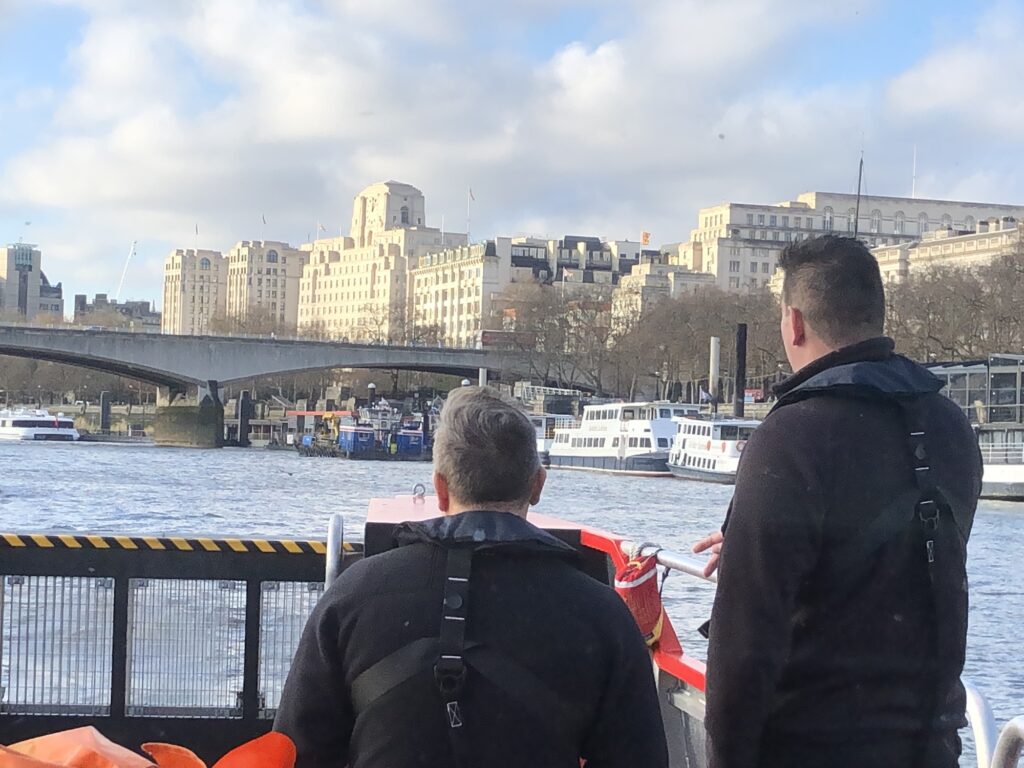
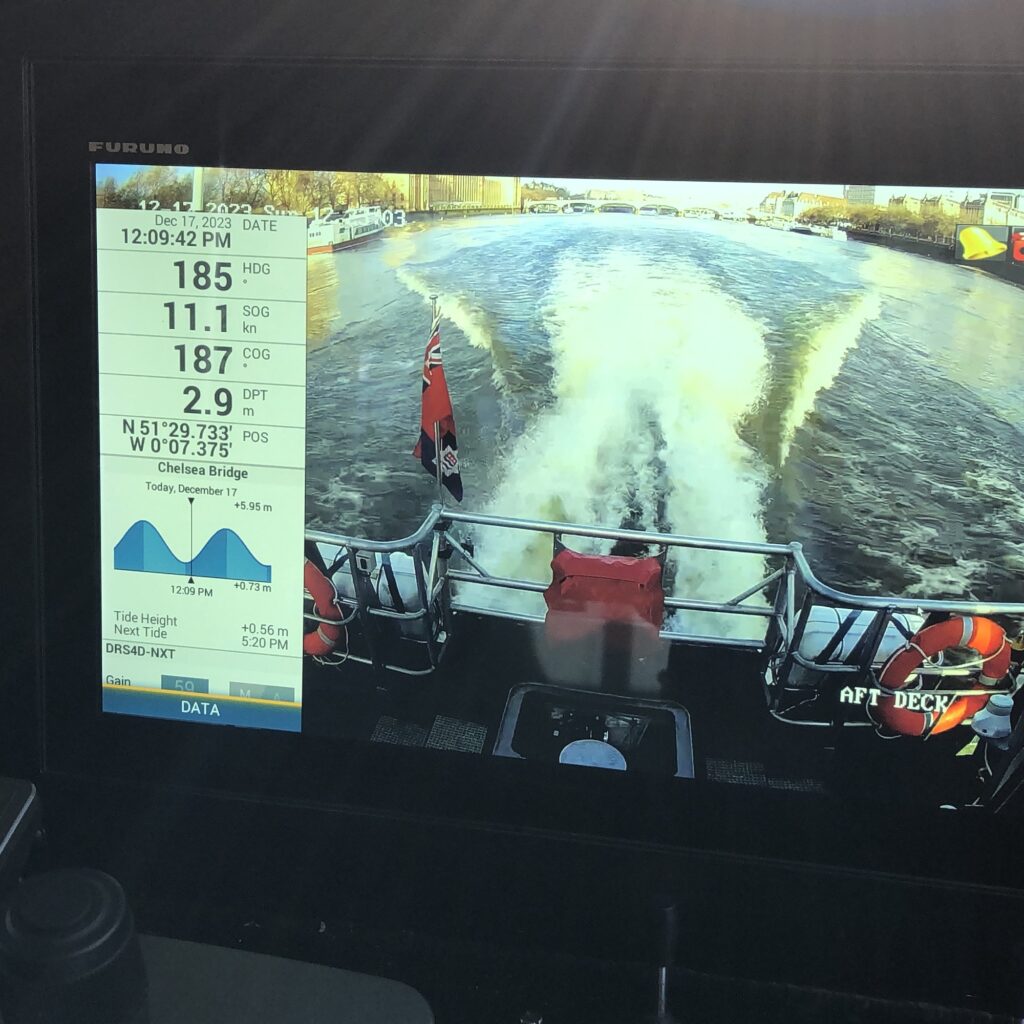
Fire boat tasks
Primarily used for tackling fires on boats or buildings on or around the Thames, they can be used for recovering and towing vessels that have got into difficulty, and for rescuing people and animals in the water or trapped on the foreshore.
A famous visitor
Not a politician nor a personality but another boat – the famous MASSEY SHAW fire boat, hero during the Blitz and on the beaches of Dunkirk – paid a visit to the Lambeth River Station on her 80th birthday in 2015.
She was named after Captain Sir Eyre Massey Shaw, the first Chief Officer of the Metropolitan Fire Brigade. Built by J. Samuel White on the Isle of Wight in 1935, she was stationed at Blackfriars Pier from 1935 until 1947, when she was transferred to Lambeth River Station. “She was replaced at Lambeth by fireboat FIREBRACE in 1961, relocated to Woolwich River Station, and decommissioned in 1970, remaining possibly as a spare boat until 1971. She was then moved to St. Katharine Docks and eventually rescued by the Massey Shaw & Marine Vessels Preservation Society, and after much work and dedication she can now be visited where she is moored in West India Dock.
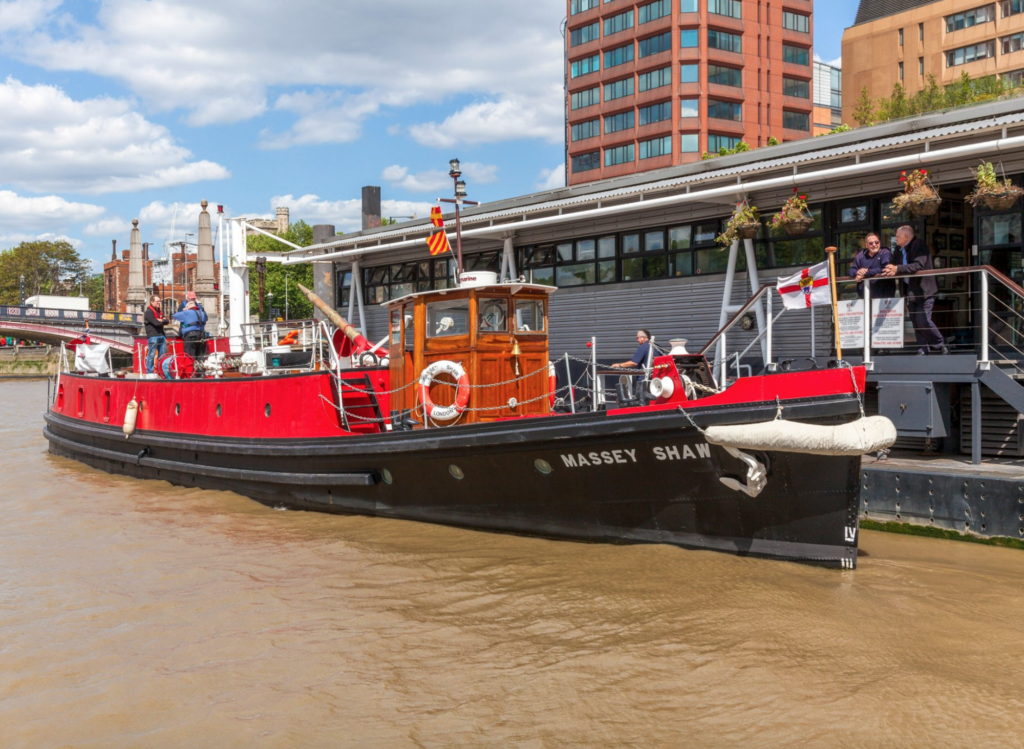
Fire boat statistics from the London Fire Brigade:
Operating between Hampton Court and the Dartford Crossing, the new fire boats ERRINGTON and TANNER can reach a speed of 45 knots (51 mph). They are equipped with two water monitors that can be operated remotely and pump at a rate of 2,500 litres a minute; a crane to aid rescues; and they are built with a flat bottom to enable easy access to shallow waters and the riverside. They are crewed by an officer and four firefighters.
Their callsigns, H23A and H23B, are in memory of firefighters Adam Meere and Billy Faust, two London firefighters who died attending a fire in 2004.
Their work is not in isolation. They coordinate their missions and take part in exercises with the MPS Marine Policing Unit, the RNLI and London’s National Police Air Service, and when occasions arise they transfer casualties to the London Ambulance Service.
Sources and further Information
A short History of London’s Fireboats by David C. Pike
History of the Massey Shaw…Visit the Massey Shaw…The Massey Shaw a Dunkirk Little Ship
The history of the Lambeth River Station: from barge to boat.
Two articles about the naming of the latest Lambeth River Fire Station boats:
Errington and Tanner.
Many thanks to:
Matt, Simon and the crew of ERRINGON, who put her through her paces for us on December 17, 2023.
Also to Bill and the Massey Shaw archivist for some detailed information.
NB The Massey Shaw Education Trust is looking for volunteers, engineers and funding to help them get to Dunkirk in 2025.